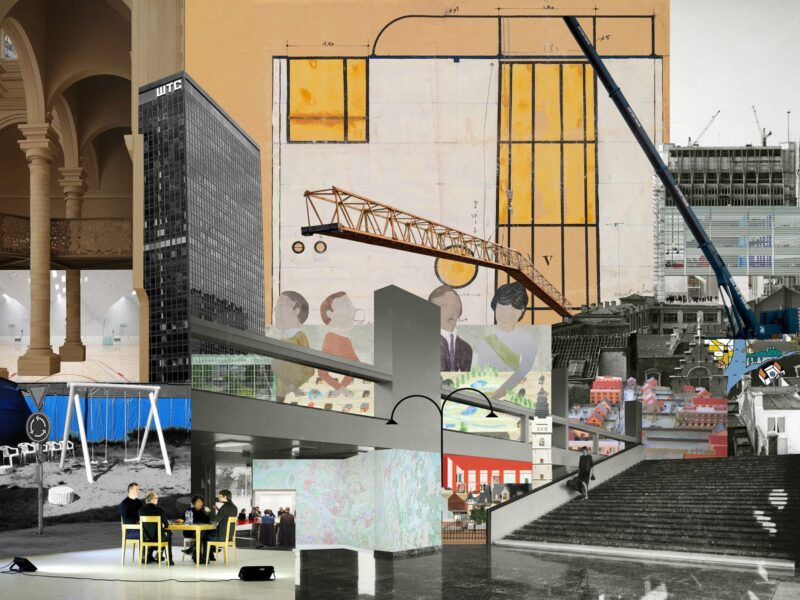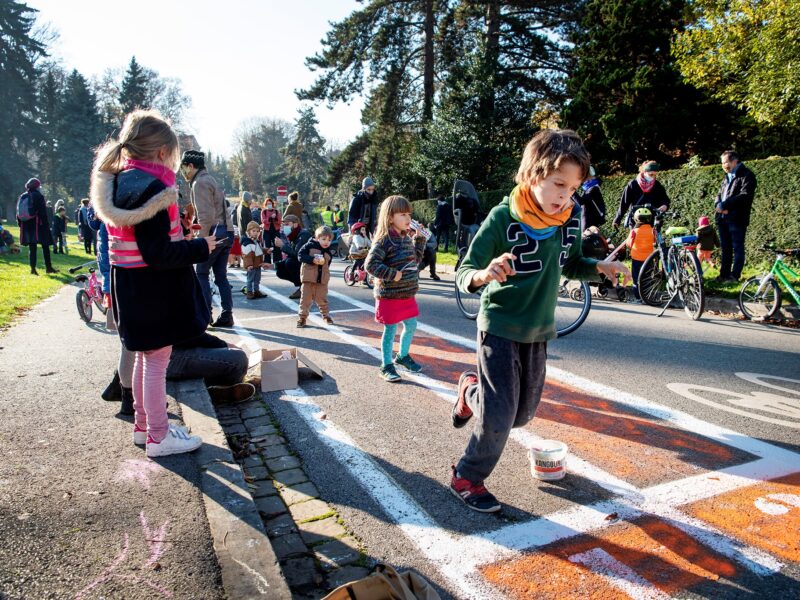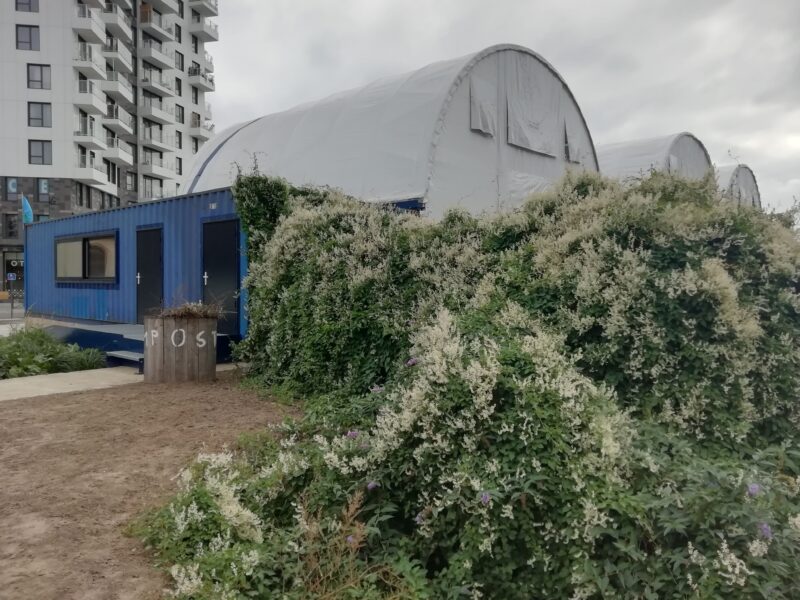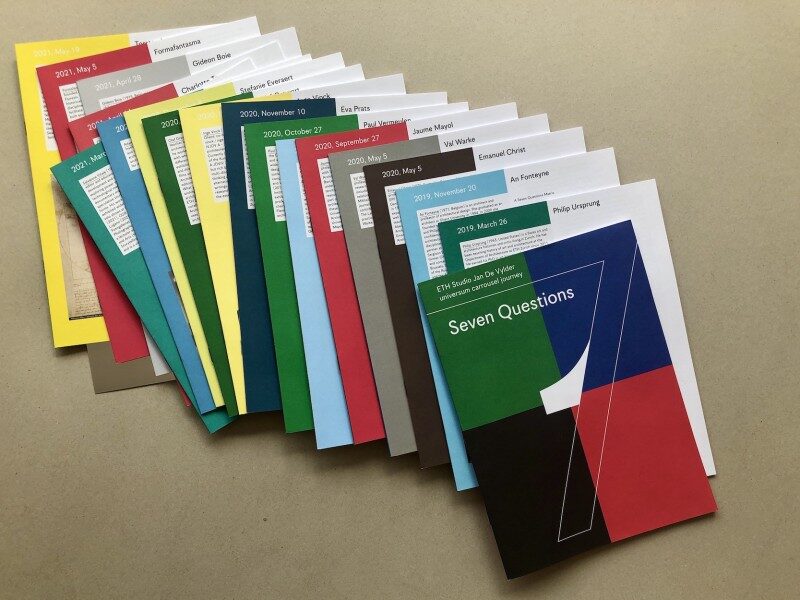Article
Curating the landscape: Tour & Taxis Park
Gideon Boie
9/05/2025, ABOUT:
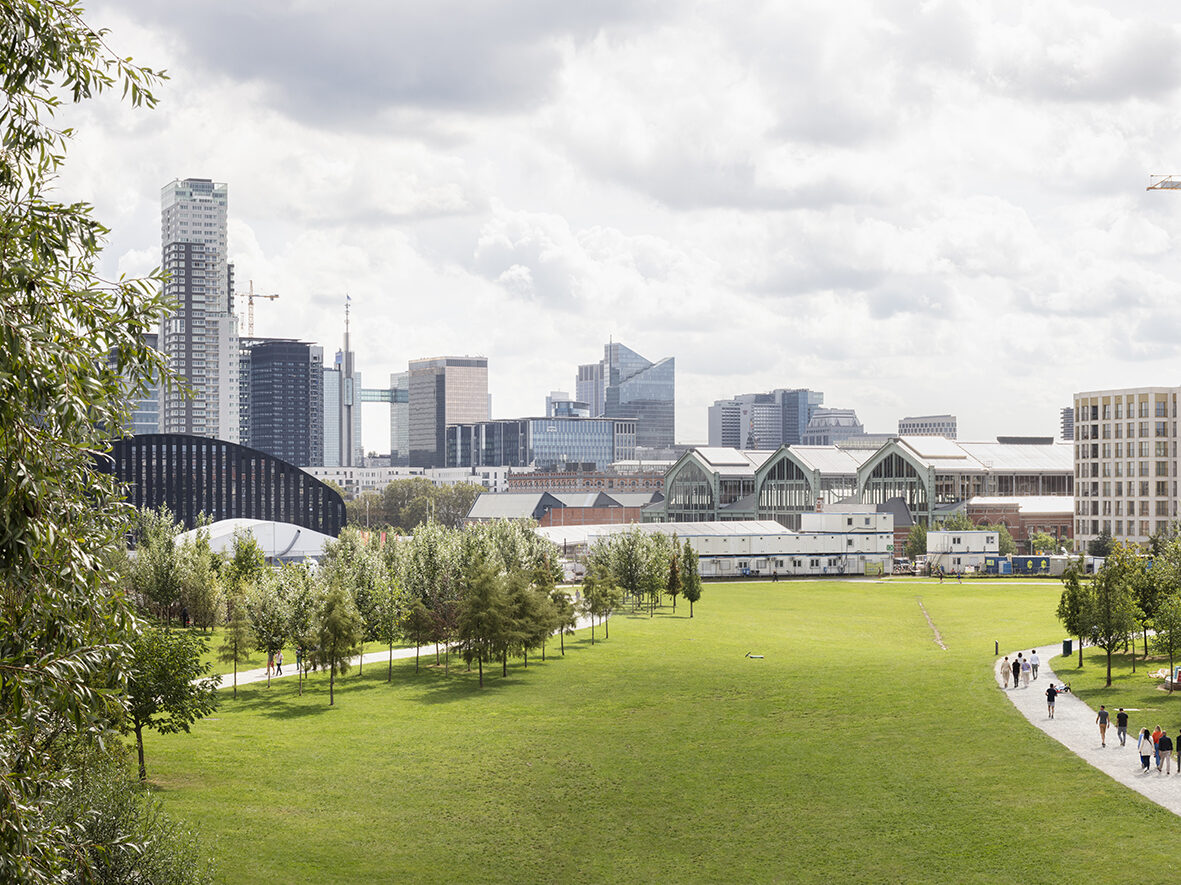
Image: Michiel De Cleene
In Brussels, the Tour & Taxis park transforms a former railway yard into a public space. Shaped by topography and hidden hydrology, the project defines an open and evolving landscape, adaptable to climate and social use.
The landscape of the Tour & Taxis site is one of the hallmark developments in Brussels today. The Gare Maritime, designed by Neutelings Riedijk, has turned postindustrial heritage into a majestic public interior. Next door is the Herman Teirlinck office block for the Flemish Government, designed by the same office. On the opposite side stands the Brasserie de la Senne, a brewery designed by Generale. And the new urban quarter contains apartment blocks by Sergison Bates, noAarchitecten, AWG, and others.
Still, it is the tiny new pond before the Gare Maritime that deserves attention. The pond, designed by Bas Smets, is in many ways the final element of the extensive Tour & Taxis redevelopment project. Of course project developer Nextensa is still planning new buildings with about 700 living units in a dozen high-rise buildings, but the small pond marks the starting point for what is known as the green alley, cutting through the development of the former railway site and connecting with different new parks along its path.
The pond is also the most visible sign of Bureau Bas Smets’ landscape design for the Tour & Taxis site — part of a wider goal to rethink the urban landscape on the basis of water flows in the region. Although the Senne River was covered in the 19th Century, it is still a defining urban infrastructure in many ways. Similarly, the network of secondary streams and valleys forms a defining substratum, including the Maelbeek, Molenbeek and Woluwe, if only because these hidden flows are still reflected in the names of municipalities and neighborhoods in Brussels.
The plan of water flows in Brussels, drawn-up by Bas Smets, is an unofficial working document, once commissioned by the Government Architects of Flanders and Brussels. Still, the document steers detailed interventions scattered throughout the region, such as Tour & Taxis. The absence of true regional planning in Brussels means that, paradoxically, the sustainability and resilience of the landscape depends on specific building developments. The landscape of Tour & Taxis is therefore a necessary compromise with the needs of real estate developments.
One of the ecological interventions by Bas Smets was in fact a smart tactic to delineate the building and secure an open area. The open field, part of the green corridor along the former railway bed, was previously used as a dumping ground to store soil excavated elsewhere. The intervention allowed for a wet area to drain surface water, but it also ensured that the area would never be stable enough to function as a foundation for buildings. Still, the inspiration for the green corridor is part of a much greater history of civic protests.
For centuries, Thurn und Tassis was the noble family managing postal services in Europe. First used as a grassland for their horses, the site conveniently located along the canal of Brussels was industrialized around 1900. The Royal Depot and the Gare Maritime cargo station were built in connection with the first railway line on Europe’s mainland, running between Brussels and Mechelen. By the end of the 20th century, the site fell into disuse and was abandoned, occasionally serving as the grounds for festivals and informal activities.
Thurn und Tassis, “Frenchified” as Tour et Taxis, became the biggest open land reserve in the heart of the Brussels-Capital Capital Region, just a stone’s throw from North Station, and thus a prime stage for speculative real estate developments. During the nineties, the idea was to create a Music City, whose main attraction was a concert hall with a capacity of 12,000 visitors. The program was a catalyst for administrative and commercial services on the vacant site, and before long, the site was privatized with the plan to clear out its industrial remains.
From the outset, local communities pushed back against the project, offering up counter proposals for the destructive development. One of the protest movements, led by BRAL (Brusselse Raad voor het Leefmilieu), an acronym that stands for Brussels Council for the Environment, was known as “TouT Public Rachetons TouT” (Make It All Public, Buy It All Back), playing with the T’s of Tour & Taxis. For the protestors, the battle was about urging the government to reacquire the site and render it a public space for all. Part of the initiative was carried out by heritage association Fonderie, fighting for the preservation of the former warehouses and railway infrastructure.
That battle, however, was not just antagonistic, but about many different key actors — public, private, and civil — engaging in intersecting processes. The interests were often conflicting, but over the course of 30 years, new positions have been developed and agreements made. Most notably, the green development was subject to ongoing negotiations, with studies by Michel Desvigne and others in 2011, commissioned by the regional agency for the environment. The green corridor is one of the elements that was adopted in the final design for the park.
Another unusual element that was integrated in the Tour & Taxis park was the idea of urban agriculture. The catalyst was the Parckdesign Biennial 2014, curated by Alive Architecture, and again commissioned by the regional agency for the environment. The former railway bedding was transformed into “Parckfarm,” designed by Taktyk and complete with installations, a farm house, pizza oven, vegetable garden, chicken run and much more. Initially intended as a temporary project to last just 6 months, the unique farm was made permanent, with installations still up and running today.
After the recent opening of the Pannenhuispark, designed by LandInZicht, and the L28 park, designed by Sweco, the whole area of Tour & Taxis now functions as what Bas Smets calls “a kind of autonomous metabolism” in the city. The landscape is not only brought into connection with the water management, but it is also used to bridge the real estate developments with the sociological reality in the densely populated areas around the former industrial site. In doing so, it makes the pond in front of Gare Maritime a symbol of nature and so much more.
Published in ABOUT:’s first thematic issue on the ‘The Collective’: Gideon Boie, Curating the landscape / Curare il paesaggio: Tour & Taxis Park, ABOUT:, Year 1, Issue 1 (May 2025), 90-97.
Tags: Activism, Brussels, English
Categories: Architecture
Type: Article
